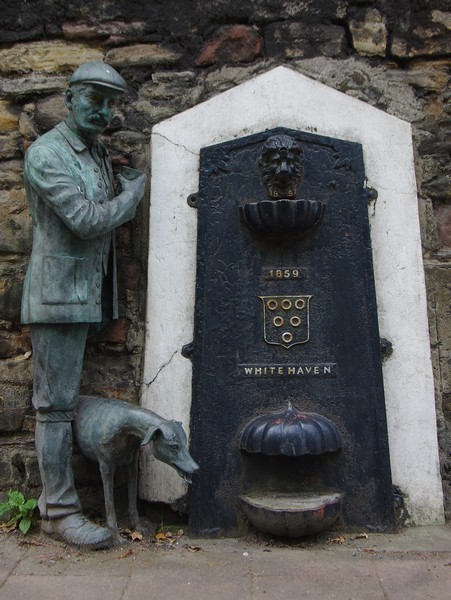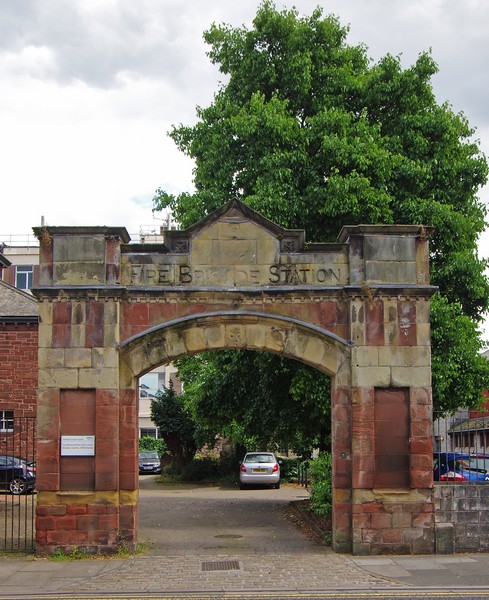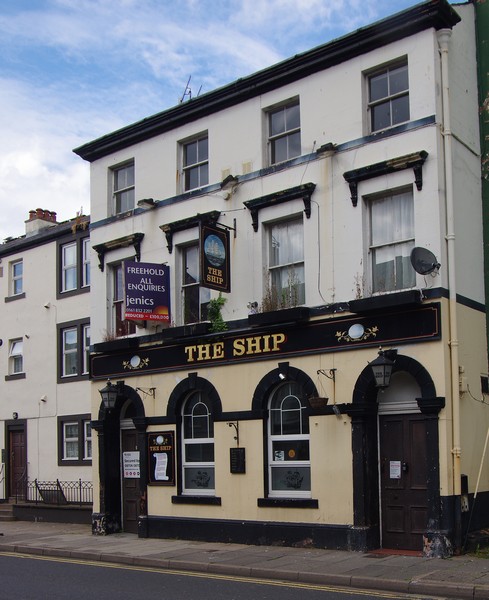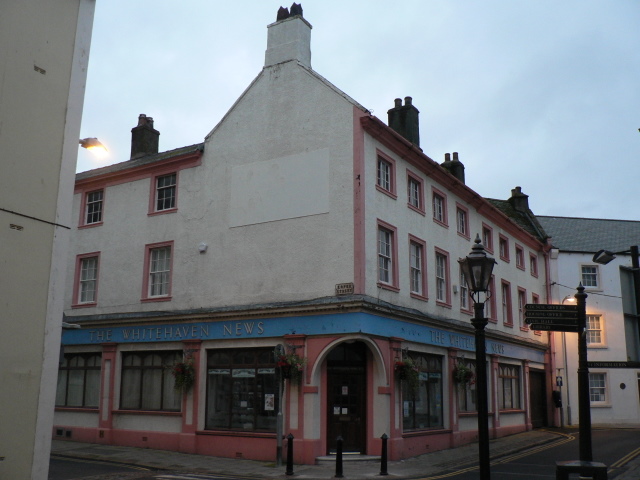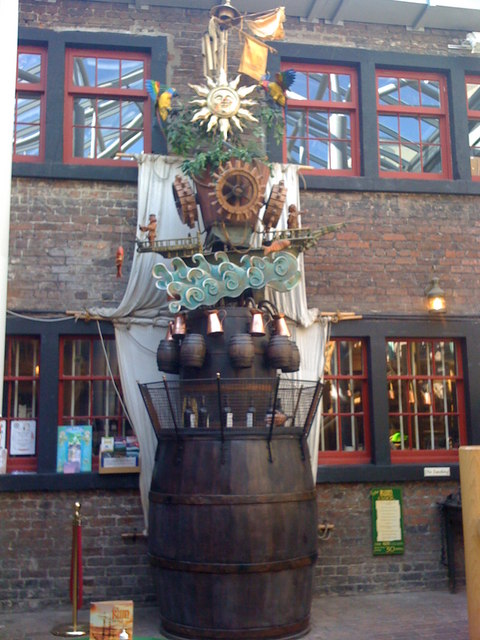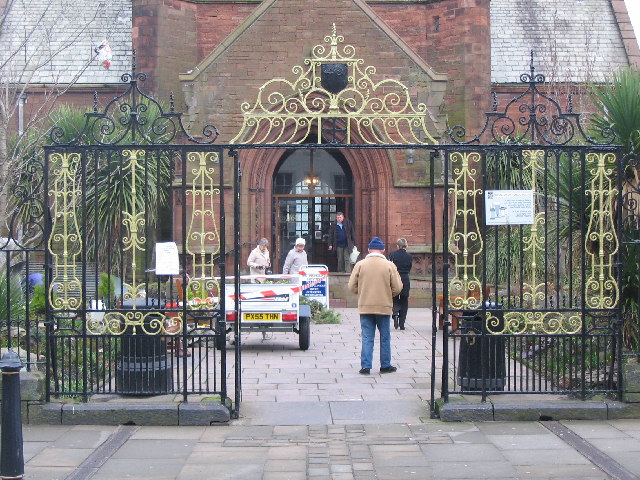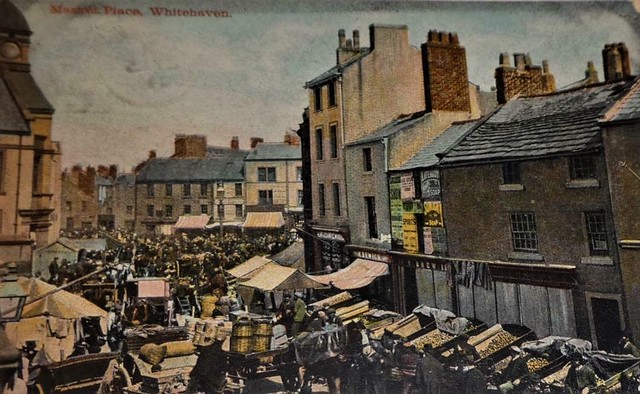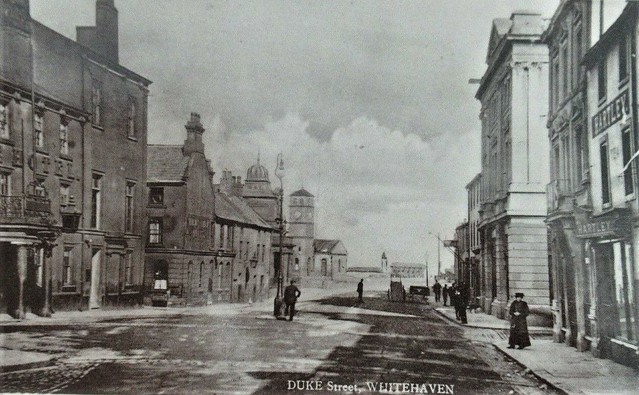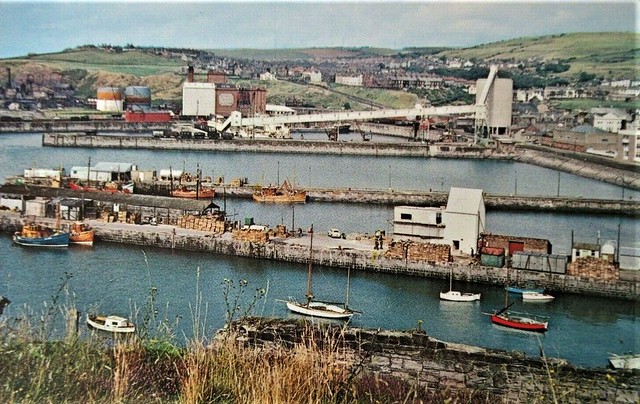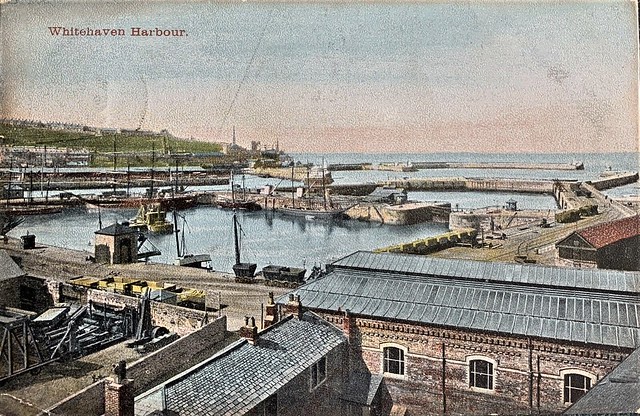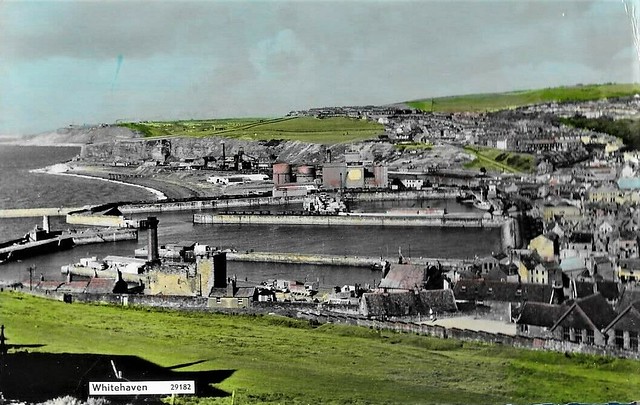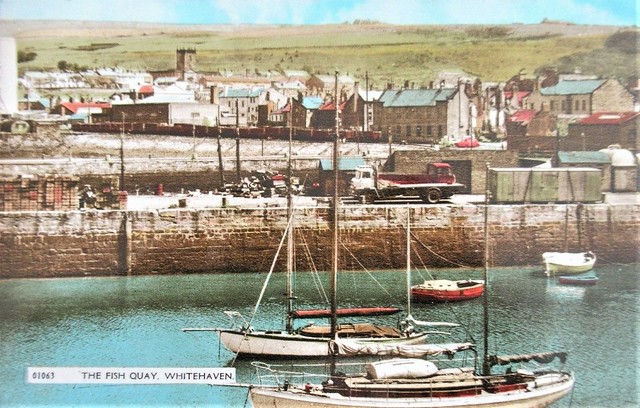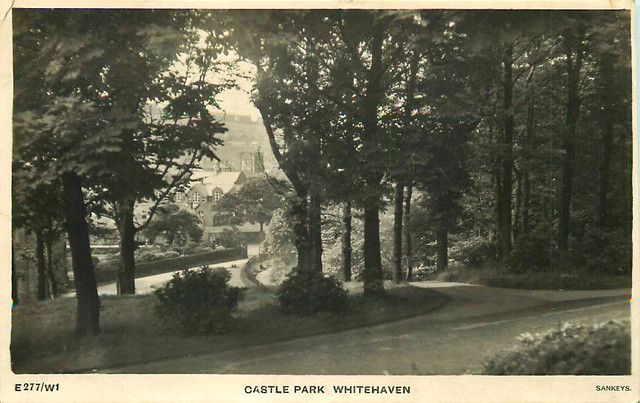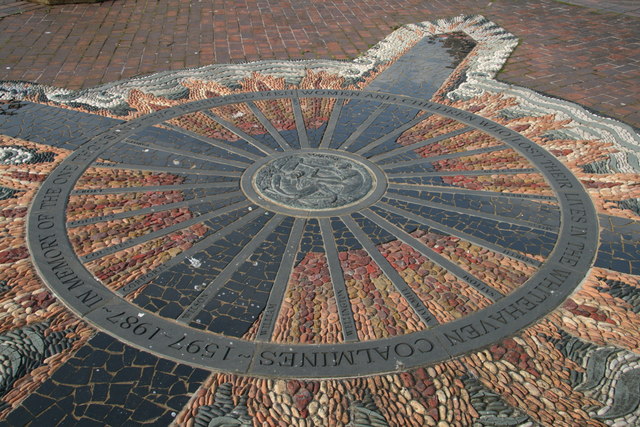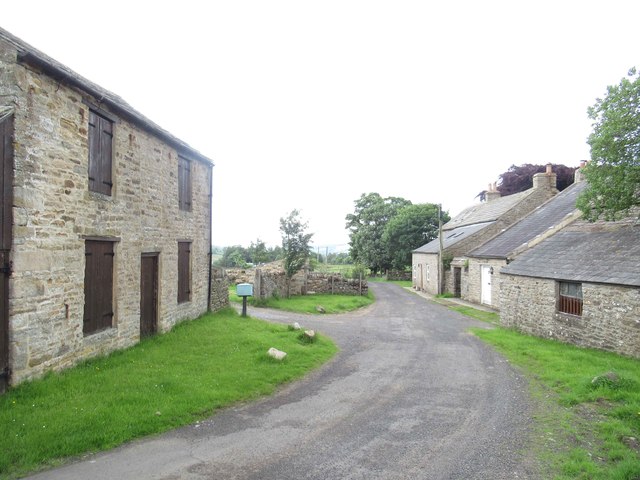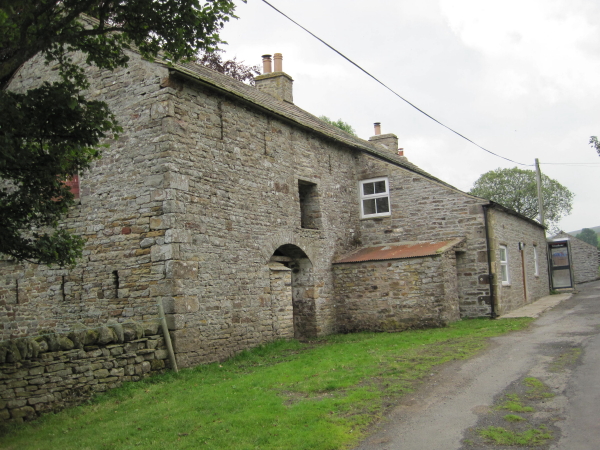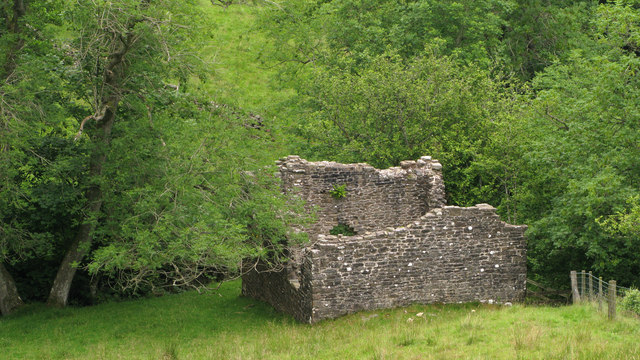Whitehaven
Whitehaven is a town and port on the coast of Cumbria, England. Historically a part of Cumberland, it lies equidistant between Cumbria's two largest settlements, Carlisle and Barrow-in-Furness. It is the administrative seat of Borough of Copeland district council, and has a town council for the parish of Whitehaven. The population of the town was 23,986 at the 2011 Census.
The town's modern prosperity was largely due to the exploitation of the extensive coal measures, and a busy trade in coal and tobacco through the harbour from the 17th century onwards. It was, after London, the second busiest port of England for tonnage from 1750 to 1772. Today the major industry is the nearby Sellafield nuclear complex, which is the largest local employer of labour and has a significant administrative base in the town.
Located on the west coast of the county, near to the Lake District National Park, Whitehaven includes a number of former villages, estates and suburbs, such as Mirehouse, Woodhouse, Kells and Hensingham, and is served by the Cumbrian Coast line and the A595.
Early History
Although there was a Roman fort at Parton, around to the north, there is no evidence of a Roman settlement on the site of the present town of Whitehaven.
The area was settled by Irish-Norse Vikings in the 10th century. The area name of Copeland, which includes Whitehaven, indicates that the land was purchased from the Kingdom of Strathclyde, possibly with loot from Ireland.
Following the arrival of the Normans, in about 1125 St Bees Priory was founded by William de Meschin, and soon afterwards he granted it a large tract of land from the coast at Whitehaven to the river Keekle, and then south down the River Ehen to the sea. This included the small fishing village of Whitehaven. Following Henry VIII's Dissolution of the Priory in 1539, ownership of this estate passed through a number of secular landlords until it passed into the hands of the Lowther family in the 17th century.
The modern growth of Whitehaven started with the purchase by Sir Christopher Lowther of the estate in 1630 and the subsequent development of the port and the mines. In 1634 he built a stone pier providing shelter and access for shipping enabling the export of coal from the Cumberland Coalfield, particularly to Ireland, which was a key event in the growth of the town. It rapidly grew from a small fishing village to an industrial port.
Whitehaven was a township within the "Preston Quarter" of the parish of St Bees. and the town's churches were chapels-of-ease of St Bees until 1835 when three ecclesiastical districts were created in Whitehaven.
Tobacco and Coal
Whitehaven’s prosperity during the 18th and 19th centuries was based on tobacco and coal. By 1685, there were ships plying between the town and the British colonies in America of Virginia, Maryland and Pennsylvania. By the early 18th century about 10% of England's tobacco imports passed through Whitehaven, and by the middle of the century it was the second or third port for tobacco, according to H.M. Customs records of the time. The tobacco would then be re-exported to Ireland, France, Holland and other regions.
However, after the Acts of Union 1707 with Scotland the port of Glasgow began to take over Whitehaven's tobacco trade, leading to the later creation of Glasgow's Tobacco Lords. By the second half of the 18th century there was a marked decline in shipping of tobacco via Whitehaven. By 1820 the Customs Collector did not mention tobacco in his report on Whitehaven.
Whitehaven grew into a major coal mining town during the 18th and 19th centuries, and also became a substantial commercial port on the back of this trade. Daniel Defoe visited Whitehaven in the 1720s, and wrote that the town had:
:"grown up from a small place to be very considerable by the coal trade, that it is now the most eminent port in England for shipping off of coals, except Newcastle and Sunderland and even beyond the last. They have of late fallen into some merchandising also, occasioned by the strange great number of their shipping, and there are now some considerable merchants; but the town is yet but young in trade".
By the end of the 18th century, Whitehaven was exporting its coal mainly to Ireland; to replace the tobacco trade Whitehaven turned to importing sugar from Barbados, cotton wool from Antigua and coffee and cocoa from St Lucia. There is little evidence to suggest that Whitehaven was involved in the slave trade. Due to the coal trade Whitehaven was, after London, the second port of England in terms of tonnage of shipping from 1750 to 1772. Even by 1835 Whitehaven was still the fifth placed port, with 443 ships registered, but by the end of the 19th century only 68 vessels were registered.
During the 19th century the port of Whitehaven was overtaken by Bristol, Liverpool and Glasgow, as they had better deep water dock facilities, and were closer to large centres of population and industry. The huge development of a national railway network had also reduced Whitehaven's 18th century competitive advantage of having coal extracted very close to a harbour for shipment.
People
The American naval captain John Paul Jones led a naval raid upon the town in 1778 during the American War of Independence; it is said to be the last invasion of England by some definitions.
The town has links to many notable people: Jonathan Swift, who claimed that an over-fond nurse kidnapped him and brought him to Whitehaven for three years in his infancy; Mildred Gale, grandmother of George Washington; and William Wordsworth, who often came into town to visit his family. Mildred Gale is buried in the graveyard of St Nicholas's Church in Whitehaven.
Town Planning
Whitehaven was, with Falmouth, the first post medieval foundation in England. It is the most complete example of planned Georgian architecture in Europe and recently has been pursuing growth through tourism. Whitehaven's planned layout was with streets in a right-angled grid. James Robinson is officially credited as the original architect but some (including Alex James) contest the claim.
Although Sir Christopher Lowther initially purchased Whitehaven it was his son, Sir John Lowther, who was responsible for its growth and development. Sir John acquired the market charter in 1660 but the urban growth did not start until the 1680s when he laid out a spacious rectangular grid of streets to the north east of the existing tiny hamlet.
Sir John specified that the houses were "to be three storeys high, not less than 28 feet from the street level to the square of the side walls, the windows of the first and second storeys to be transomed and the same, together with the doors to be of hewn stone." Ample provision was made for gardens.
One block was left vacant for a new church and in 1694 another site was given for a Presbyterian chapel. Most of the streets were relatively narrow, about ten yards, but the principal thoroughfare, Lowther Street, which ran through the town centre from the Lowther family residence to the waterfront, was laid out on the more generous width of 16 yards. The old chapel of Whitehaven was demolished to make way for Lowther Street, and its materials used in the building of a new school for the town.
Whitehaven Castle was built in 1769, replacing an earlier building destroyed by fire. In 1924, the Earl of Lonsdale sold Whitehaven Castle to Mr H.W. Walker, a local industrialist. Walker donated the building to the people of West Cumberland, along with £20,000 to convert it into a hospital to replace the old Whitehaven Infirmary at Howgill Street, which was established in 1830. With the opening of the West Cumberland Hospital in 1964, the castle became a geriatric unit until forced to close in 1986, owing to fire regulations. It has now been converted to private housing.
Harbour
History
The existence of a harbour or landing place at Whitehaven can be traced back to the early 16th century when quay-dues – otherwise known as wharfage – were recorded in 1517. Also in 1677 an historical description of Whitehaven refers to “a little pier, in shallow water, built with some wooden piles and stones”. So, there was probably a man-made harbour structure at Whitehaven before the Lowthers started to develop the area.
It was the purchase of the manor of St Bees in 1630 by the Lowther family that was the start of the development of Whitehaven harbour primarily to export coal. Sir Christopher Lowther built a stone pier in 1631-34, and it survives albeit very modified and is known as Old Quay.
By the 1660s the pier was suffering from storm damage and by the 1670s was considered not to have sufficient capacity for the growing number of vessels wanting to use it. The prospect of a rival pier being built at Parton to the north of Whitehaven, galvanised Sir John Lowther into developing the harbour and by 1679 work was underway. During the late 17th and 18th century the harbour was extended by ballast walls, moles and piers to become one of the most complex pier harbours in Britain. April 1778 saw the harbour as the first site of an American attack on the British Isles during the American Revolutionary War.
The town's fortunes as a port waned rapidly when ports with much larger shipping capacity, such as Bristol and Liverpool, began to take over its main trade. Its peak of prosperity was in the 19th century when West Cumberland experienced a brief boom because haematite found locally was one of the few iron ores that could be used to produce steel by the original Bessemer process. Improvements to the Bessemer process and the development of the open hearth process removed this advantage. As with most mining communities the inter-war depression was severe; this was exacerbated for West Cumbria by Irish independence which suddenly placed tariff barriers on the principal export market.
The harbour lost its last commercial cargo handling operation in 1992 when Marchon ceased their phosphate rock import operations. A new masterplan for the harbour was prepared by Drivers Jonas and marine consulting engineers Beckett Rankine with the objective of refocussing the town on a renovated harbour. The key to the masterplan was the impounding of the inner basins to create a large leisure and fishing harbour.
Current situation
The harbour has seen much other renovation due to millennium developments; a picture of the harbour was used on the front page of the Tate Modern's promotional material for an exhibition of Millennium Projects in 2003.
The Harbour rejuvenation has cost an estimated £11.3 million and has enabled 100 more moorings within the marina. Further investment of an additional £5.5 million has seen the development of a 40m high crows nest and a wave light feature that changes colour dependent upon the tide, together with the Rum Story on Lowther Street, voted Cumbria Tourism's small visitor attraction of the year 2007.
In June 2008, Queen Elizabeth II visited Whitehaven as part of the 300th Anniversary Celebrations. The Queen and Prince Philip then officially opened the refurbished Beacon, a museum set on the harbour. 10,000 people attended the event.
Railways
Whitehaven is on the Cumbrian Coast Line which runs from Carlisle to Barrow-in-Furness and has two railway stations; Whitehaven (Bransty) and Corkickle, joined by a long tunnel underneath the town.
The first railway to reach Whitehaven was the Whitehaven Junction Railway (WJR) in 1847 from which terminated at the Bransty Row station and allowed rail access to Carlisle and Newcastle upon tyne. On the southern side of the town, the first section of the Whitehaven and Furness Junction Railway (W&FJR) opened on 1 June 1849 from a terminus at Whitehaven (Preston Street) to , and thereafter gradually in stages until Barrow in Furness and ultimately Carnforth were reached. This gave access to the south onto the main West Coast line, and later became the main line of the Furness Railway. The two lines were separated by the town centre and a tramway was constructed through the market place allowing goods wagons to be horse-drawn from Preston Street to the harbour, but there was still no connection suitable for passenger trains. Consequently, in 1852 a tunnel long was built under the town, and in 1854 the W&FJR passenger trains ran through to the Bransty station from a new station at Corkickle. Preston Street became a goods-only station and served as the main goods depot for the town.
Like other colliery areas, horse-drawn tramways and then locomotive-powered railways were used extensively to move coal. The first steam locomotive made an early appearance in 1816, and was a design similar to the noted Steam Elephant built by William Chapman of Newcastle. However this pioneering engine was not too successful and was converted to a pumping and winding engine. Nonetheless the harbour and collieries eventually developed an extensive network of industrial railways within the constraints of the steep valley sides and the coast. The system had two roped inclines. The Howgill incline connected Ladysmith pit on Kells to Wellington pit at the harbour, and operated to the 1970s, and on the south of the town the Corkickle incline, known locally as "The Brake" was built in 1881 from the Furness Railway main line to Croft Pit. This closed in 1931 but was reopened in May 1955 to serve Marchon Products' chemical factory. The Brake closed for good on 31 October 1986 when it was the last commercial roped incline in Britain. It was in length with gradients of between 1 in 5.2 and 1 in 6.6.
The nearby Lowca engineering works began to produce locomotives in 1843, including the first Crampton locomotives, which became the fastest locomotives of the day; one was reported to have reached 65mph. Over the life of the works, some 260 locomotives were produced – mainly for industrial lines. They also entered shipbuilding in 1842-3, producing Lowca, the first iron ship launched in Cumberland.
Mines and pits
The earliest reference to coal mining in the Whitehaven area is in the time of Prior Langton (1256–82) of St Bees Priory, concerning the coal mines at Arrowthwaite. St Bees Priory was dissolved in 1539, and the lands and mineral rights passed to secular owners. In 1560 Sir Thomas Chaloner granted bases of land for digging coal, and in 1586 he granted St Bees School liberty "to take 40 loads of coal at his coal pits in the parish of St Bees for the use of the school". In 1670, the manor of St. Bees was bought by Sir John Lowther – he then began to develop the coal trade due to the ever-increasing demand from Ireland. Lowther invested in the best available technology to help monopolise the coal trade. By the 1730s Whitehaven had the deepest mines due to the necessity to drive ever deeper shafts to reach new seams of coal.
An example of the Lowthers' interest in technology could be seen at Stone Pitt when one of the world's earliest steam engines, Engine No. 5 built by Thomas Newcomen and John Calley in 1715 was installed, to help in drainage and haulage. William Brownrigg, Whitehaven's most eminent scientist, was the first to investigate the explosive mine gas fire damp.
The Lowthers' technological advances continued when their chief steward, Carlisle Spedding sunk Saltom Pit in 1729. Saltom Pit was the second pit to be sunk beneath the sea. At Saltom Pit, Carlisle Spedding pioneered the use of explosives in sinking shafts. He also invented the first form of 'Safety Lamp', it was called the Spedding Wheel or Steel Mill. On occasions the Spedding Wheel caused explosions or fires but it was a major improvement over the naked flame.
Saltom Pit was constructed around 20 ft above sea level, on land below the cliffs near to Haig Colliery. The pit workings went down to a depth of 456 ft (138m). Saltom Pit ceased working coal in 1848, but today it is a Scheduled Ancient Monument (SM 27801) and is the best known surviving example of an 18th-century colliery layout. Evidence of the shaft, horse gin, stable, winding engine house, boiler house and chimney, cottages, cartroads and retaining walls, all survives in situ.
Coal excavated from Saltom Pit was raised by horse gin to surface, then transported by tram through a tunnel to Ravenhill Pit for lifting to the cliff top. Saltom Pit was used as a central pumping station, draining many of the other local mines via a drift driven in the 1790s, and continued in use long after it had ceased to work coal.
During 2007, Copeland Council declared that it could no longer afford to maintain the remaining Saltom Pit buildings, and decided to allow the pit to fall to the mercy of the Irish Sea. Following an online campaign by myWhitehaven.net, Copeland Council had a change of heart and decided to reverse this decision. They teamed up with the National Trust in an endeavour to save Saltom Pit, and obtained the necessary funding from various sources, including a 50% grant from the European Union. On Monday 8 December 2007, Saltom Pit was reopened as an historic monument. The pit buildings have been conserved and are now part of the 'Whitehaven Coast' project – a scheme to regenerate the coastal area of Whitehaven.
In three hundred years over seventy pits were sunk in the Whitehaven and district area. During this period some five hundred or more people were killed in pit disasters and mining accidents. The largest local disaster was in 1910 at Wellington Pit where 136 miners lost their lives. In 1947 at William Pit there was another disaster of similar proportions when 104 men were killed. Four separate explosions over the period 1922–1931 at Haig Pit together killed 83. Haig was to become the last pit to operate in Whitehaven.
In 1983, a major fault was encountered at Haig – with this, the future of the pit was in doubt. This, combined with the political situation, and the miners' strike in 1984–85, contributed to problems at the colliery. The workforce attempted to open a new face, but a decision had been taken to close, and after two years of recovery work, Haig finally ceased mining on 31 March 1986. Today there is no mining carried out in Whitehaven though there is a proposal to sink a new mine out under the sea for coking coal.
Marchon
In 1941, Fred Marzillier and Frank Schon moved their Marchon Chemical Company to Whitehaven to avoid German bombing. Marchon started producing some of the first detergents in the world. The new detergents were a big success as soap was in short supply due to the war. The company continued producing their own detergents as well as bulk detergent ingredients for other companies after the war. It was taken over by Albright and Wilson, often referred to as 'all bright and shiny', in 1955. The Marchon Works became the town's largest employer when the mines closed down. However, it was closed in 2005.
Sport
Whitehaven is a rugby league stronghold, its team Whitehaven play in the third tier of the British rugby league system. Their mascot is a lion called "Pride". There are also several Whitehaven-based teams playing in the amateur Cumberland League and Kells A.R.L.F.C. play in the National Conference League Premier Division. Whitehaven's female amateur R.L.F.C is named the "Wildcats".
Whitehaven F.C. currently play in the West Lancashire Football League.
West Bromwich Albion and England goalkeeper Scott Carson was also born in Whitehaven. He played for Cleator Moor Celtic.
Aston Villa and England footballer Jackie Sewell was born in Kells, Whitehaven on 24 January 1927.
Cleator Moor Celtic, Newcastle United, Crystal Palace and Ipswich Town footballer Charlie Woods was born in Whitehaven 18 March 1941. Woods became a football coach and scout working alongside England football manager Bobby Robson throughout most of Robson's career with Ipswich, Newcastle and England.
"Jam eater"
The term "jam eater" is often used to refer to people from Workington, or more generally to people from West Cumbria. When the Financial Times ran a lighthearted article on famous feuds in September 2008, featuring this, the local Whitehaven News published its own complementary feature, reporting that: "The common view is that the term is insulting because it implies people could not afford to buy meat for their sandwiches, so they had to eat jam instead."
The original article had summed up the situation in terms of the long-term rivalry between Whitehaven and nearby Workington: "Legend has it that one town's miners had jam on their sandwiches and the other did not, but no one agrees on which town it was or whether they did it because they were snobs or peasants." A reader from Maryport, a few miles further up the Cumbria coast (which, as occasionally mentioned in discussions on the topic, used to have a jam factory) reported that he had understood the term originally referred to people from Whitehaven, and this was echoed in the comments on the Whitehaven News article, suggesting that a former distinction between the Whitehaven "jam eaters" and Workington "high siders" had gradually been lost in the trading of insults across the rugby pitch.
Maritime festival
Whitehaven has also played host to a Maritime festival, which started in 1999 and was held every two years, and now annually, the last being in 2013, attracting an estimated 350,000 people to the small town.
Attractions included tall ships, air displays which include the Red Arrows and various modern and old planes, street entertainment and firework displays. At the 2003, 2005 and 2007 festivals the local Sea Cadets were very much in evidence, conducting the traditional Evening Colours ceremony each evening aboard one of the visiting tall ships, and also taking part in the festival's official closing ceremony during the late Sunday afternoon each year.
The 2005 festival also marked the 60th Anniversary of the end of the Second World War in which Whitehaven had been designated Cumbria's Official commemoration celebration. Up to 1,000 veterans and ex-service personnel took part in the parade from the town's Castle Park to the harbour side, led by members of three military bands. Services were held on the harbour side and aircraft from the Royal Air Force provided a tribute display above the harbour.
The Maritime Festivals were founded by Gerard Richardson MBE and organised by the Whitehaven Festival Company, made up of a board of volunteers, who organised 17 major events between 1999 and 2015. The Company was closed in 2016. They organised the Queen's visit to Whitehaven in June 2008, followed by the Status Quo gig in August of that year. The company staged two events in August 2009. The first was the redesigned festival (known for this year as the Whitehaven Food Festival, although it did still feature tall ships) which offered the usual wide variety of attractions, both around the southern half of the harbour and at St. Nicholas' Church, on 8–9 August. The second event, the following week, was the Here and Now Gig (a music concert with 1980s pop icons). For the June 2010 festival, which was similar in format to 2009, the music performances (Status Quo, N-Dubz and Katherine Jenkins) were moved to the harbour area.
The 2011 festival (featuring Razorlight plus several 1980s acts including Madness) continued the successful culinary theme, with the return of Jean-Christophe Novelli and other favourites. In 2012 the date of the festival was changed to the first weekend in June, to make it part of the Queen's Diamond Jubilee celebration (with a red, white and blue themed firework display).
June 2010 shootings
On 2 June 2010, Whitehaven became a focus in the international media in relation to gun laws in the United Kingdom, following a killing spree targeting people living in the western area of the county. After killing his twin brother in Lamplugh, and his family solicitor in Frizington, taxi driver Derrick Bird began the spree in Whitehaven, shooting several people on the streets and at the taxi rank where he worked, killing one.
Digital switchover trial
On 20 July 2006, Broadcasting Minister Shaun Woodward and Industry Minister Margaret Hodge announced that Whitehaven would be the pilot site for the switchover to digital terrestrial television in the United Kingdom. The selection of a pilot site followed on from trial switchovers held in Ferryside and Bolton.
The switchover began when BBC Two was switched off at 0200 on 17 October 2007. This was followed by the remaining analogue channels at 0200, on 14 November 2007. As a result of the switchover, all televisions in the Whitehaven area had to have a digital terrestrial receiver (Freeview) or digital satellite alternative (Freesat, Sky, etc.) The switchover in the Whitehaven area was not entirely successful: in nearby Eskdale, poor signal quality left viewers with blank television screens and the digital switchover was supposed to give over 40 channels but certain areas received fewer than 20.
Neighbouring towns
The main towns neighbouring Whitehaven are Workington and Maryport to the north, Cleator Moor to the east and Egremont to the south. Villages close by which are not suburbs include St Bees and Beckermet to the south and Distington to the north.
Notable people
- Abraham Acton, VC, recipient of the Victoria Cross in World War I
- John Addison, founder Prince Georges County, Maryland in America.
- John Beck, best known as the keyboard player for It Bites
- John Benson, clockmaker
- William Brownrigg M.D. F.R.S. (1711–1800), doctor and scientist.
- Scott Carson, English footballer
- James Robertson, businessman and founder of James Robertson & Sons Preserve Manufacturers.
- Stephen Conroy, Australian politician and government minister
- Stuart Cummings, rugby league referee
- Shepherd Dawson FRSE author and psychologist
- Malcolm Eccles, businessman
- Mildred Gale, grandmother of George Washington, lived and is buried in Whitehaven.
- Brian Higgins, record producer
- Dick Huddart, rugby league player
- Milton Huddart, rugby league player
- John Paul Jones, American Naval Hero, began career in Whitehaven and returned in 1778 aboard the Ranger to raid the town.
- Brad Kavanagh, actor
- Robert Salmon, maritime artist
- Jackie Sewell, English footballer
- Adam Summerfield, professional ice hockey player for Manchester Phoenix
- Charlie Woods, English footballer, coach and scout
- Gerard Richardson MBE, Founder of the International Maritime Festival, Author and businessman
Twin cities
- Kozloduy, Bulgaria
Visit the page: Whitehaven for references and further details. You can contribute to this article on Wikipedia.
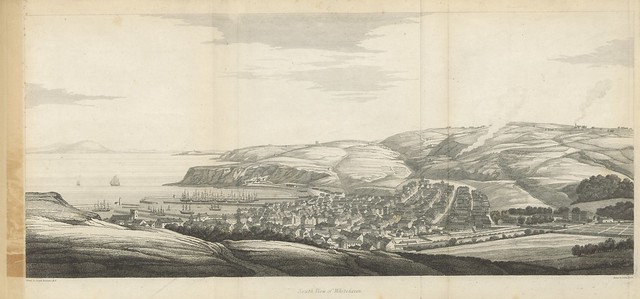
from Flickr (flickr)
Image taken from page 325 of 'Magna Britannia; being a concise topographical account of the several counties of Great Britain. [With copious illustrations.] vol. 1-6. L.P'
Pinned by Simon Cotterill
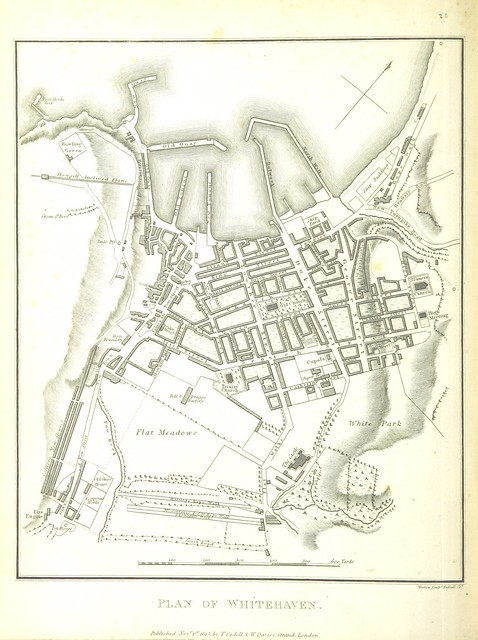
from Flickr (flickr)
Image taken from page 320 of 'Magna Britannia; being a concise topographical account of the several counties of Great Britain. [With copious illustrations.] vol. 1-6. L.P'
Pinned by Simon Cotterill
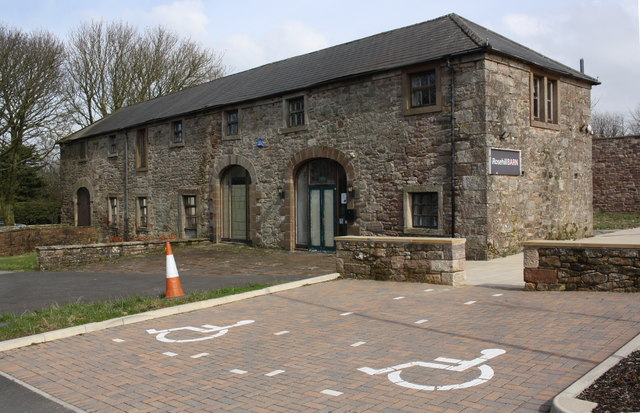
Co-Curate Page
Rosehill Theatre
- Overview Map Street View Rosehill Theatre is located in Moresby near Whitehaven. It is a converted 19th century barn; the theatre opened in 1959 and was extended in 1988. In …
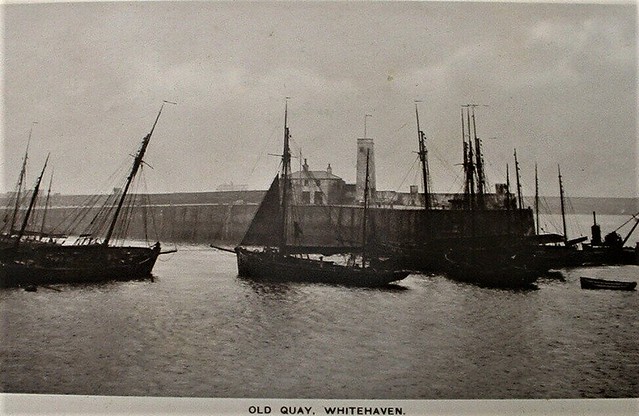
from Flickr (flickr)
An antique Photographic Postcard of the 'Old Quay Whitehaven'.Posted in 1908.
Pinned by Peter Smith
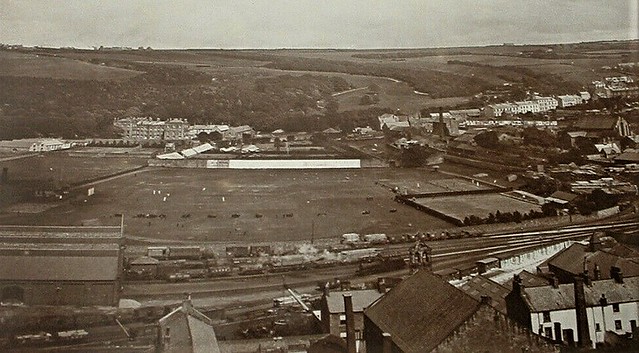
from Flickr (flickr)
An old Photographic Postcard of the Cricket Field Whitehaven CUMBRIA
Pinned by Peter Smith

from Flickr (flickr)
Cumberland WHITEHAVEN ORPHAN GIRLS HOME Original Early 1900s Postcard
Pinned by Peter Smith

from Flickr (flickr)
Cumbria - Silecroft, Whitehaven congregational vist, trip, June 1907
Pinned by Peter Smith
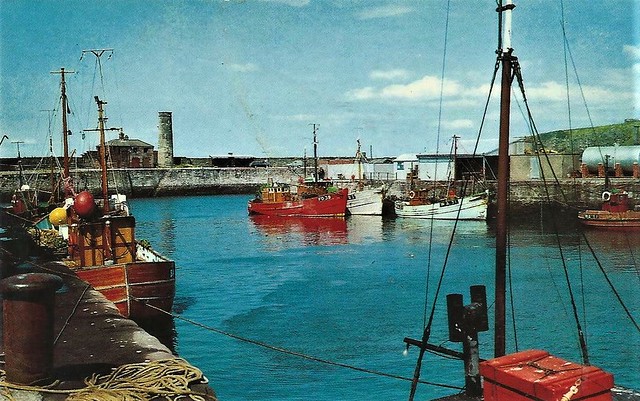
from Flickr (flickr)
Cumbria Whitehaven Fish Quay Photo Precision Postcard c.1960's
Pinned by Peter Smith

from Flickr (flickr)
Cumbria WHITEHAVEN Market Street, Animated Scene c1910 Postcard by G.D.& D.
Pinned by Peter Smith
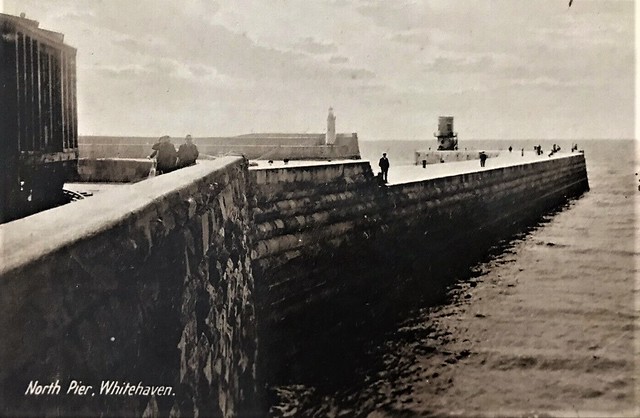
from Flickr (flickr)
North Pier Whitehaven. 1920s. Milton Gelatined Sepia View Postcard
Pinned by Peter Smith

from Flickr (flickr)
POSTCARD SHIP-PIER MASTER`S HOUSE & WATCHTOWER-WHITEHAVEN HARBOUR CUMBRIA 1904
Pinned by Peter Smith
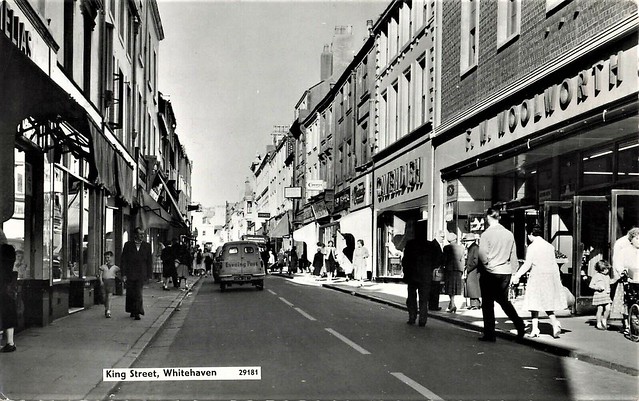
from Flickr (flickr)
Real Photographic Postcard King Street Whitehaven shows Woolworth Shop Front
Pinned by Peter Smith
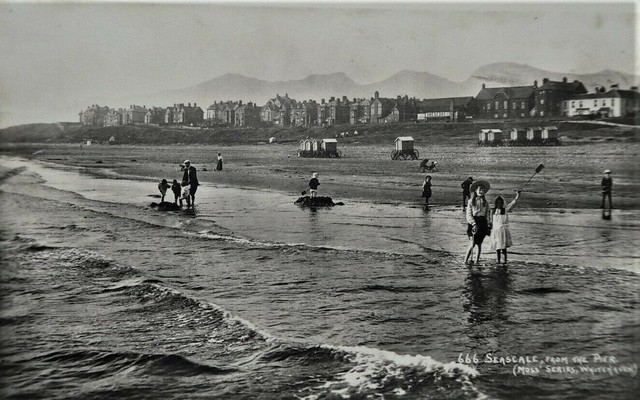
from Flickr (flickr)
RPPC SEASCALE FROM THE PIER MOSS' SERIES WHITEHAVEN ABRAHAM KESWICK CUMBRIA
Pinned by Peter Smith
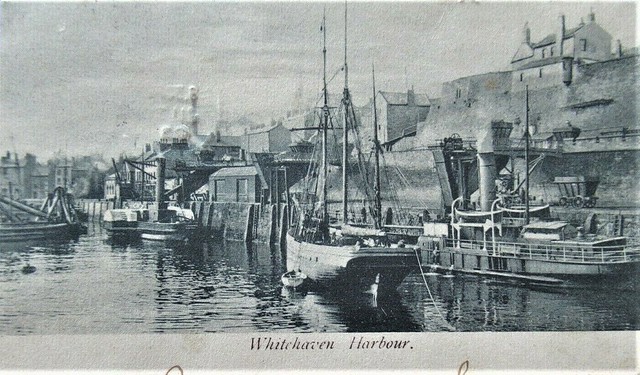
from Flickr (flickr)
Vintage & Posted 1903 Whitehaven Harbour Cumbria Postcard Clear Local Postmark
Pinned by Peter Smith
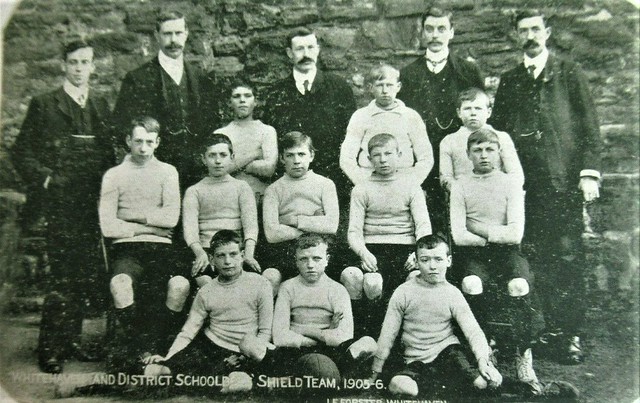
from Flickr (flickr)
Whitehaven & District School Shield Team 1905-06 Cumbria RP Postcard Frizington
Pinned by Peter Smith

from Flickr (flickr)
Whitehaven & Harbour From Prospect Hill Cumbria RP Postcard Posted
Pinned by Peter Smith
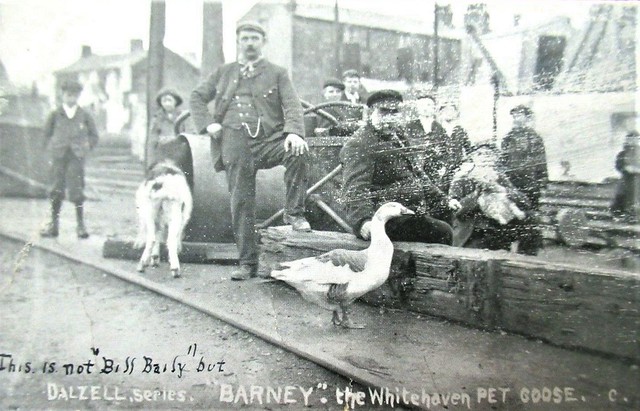
from Flickr (flickr)
Whitehaven Barney The Pet Goose Cumbria RP Postcard Used 1904
Pinned by Peter Smith

from Flickr (flickr)
Whitehaven Beach very old postcard 1903 to Seville Hunter Holland Park Interesti
Pinned by Peter Smith

from Flickr (flickr)
Whitehaven County Secondary School Cumbria RP Postcard Unposted
Pinned by Peter Smith

from Flickr (flickr)
Whitehaven Harbour & North Pier Cumbria RP Colour Postcard
Pinned by Peter Smith

from Flickr (flickr)
WHITEHAVEN MARKET STREET - SCARCE EARLY COLOURED POSTCARD!
Pinned by Peter Smith
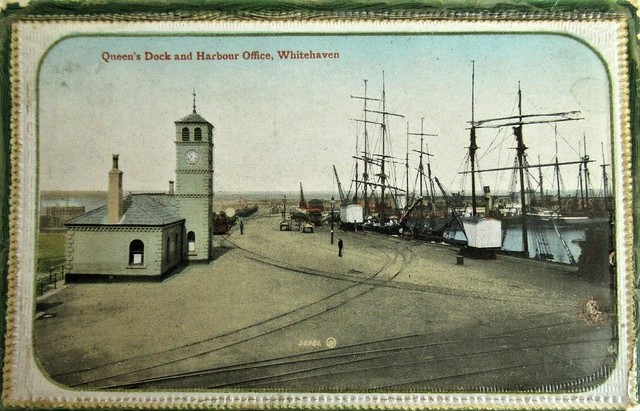
from Flickr (flickr)
Whitehaven Queens Dock & Harbour Office Cumbria Colour Postcard Green Borders-l1600 (1)
Pinned by Peter Smith
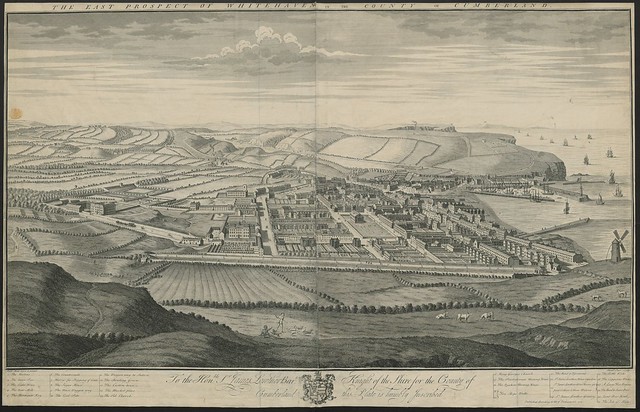
from Flickr (flickr)
The BL King’s Topographical Collection: "THE EAST PROSPECT OF WHITEHAVEN IN THE COUNTY OF CUMBERLAND. "
Pinned by Simon Cotterill
Co-Curate Page
Historic Buildings and Monuments in Whitehaven
- Listed buildings and scheduled monuments in Whitehaven, Cumbria from the National Heritage List for England[1]. Use the Search (below) if looking for a specific building / monument. Structure List No. …

from Youtube (youtube)
Whitehaven coal mine re-opened with aid from Nuffield Fund (1937)
Pinned by Simon Cotterill


from Flickr (flickr)
Image taken from page 325 of 'Magna Britannia; being a concise topographical account of the several counties of Great Britain. [With copious illustrations.] vol. 1-6. L.P'
Pinned by Simon Cotterill

from Flickr (flickr)
Image taken from page 320 of 'Magna Britannia; being a concise topographical account of the several counties of Great Britain. [With copious illustrations.] vol. 1-6. L.P'
Pinned by Simon Cotterill

Co-Curate Page
Rosehill Theatre
- Overview Map Street View Rosehill Theatre is located in Moresby near Whitehaven. It is a converted 19th century barn; the theatre opened in 1959 and was extended in 1988. In …

from Flickr (flickr)
An antique Photographic Postcard of the 'Old Quay Whitehaven'.Posted in 1908.
Pinned by Peter Smith

from Flickr (flickr)
An old Photographic Postcard of the Cricket Field Whitehaven CUMBRIA
Pinned by Peter Smith

from Flickr (flickr)
Cumberland WHITEHAVEN ORPHAN GIRLS HOME Original Early 1900s Postcard
Pinned by Peter Smith

from Flickr (flickr)
Cumbria - Silecroft, Whitehaven congregational vist, trip, June 1907
Pinned by Peter Smith

from Flickr (flickr)
Cumbria Whitehaven Fish Quay Photo Precision Postcard c.1960's
Pinned by Peter Smith

from Flickr (flickr)
Cumbria WHITEHAVEN Market Street, Animated Scene c1910 Postcard by G.D.& D.
Pinned by Peter Smith

from Flickr (flickr)
North Pier Whitehaven. 1920s. Milton Gelatined Sepia View Postcard
Pinned by Peter Smith

from Flickr (flickr)
POSTCARD SHIP-PIER MASTER`S HOUSE & WATCHTOWER-WHITEHAVEN HARBOUR CUMBRIA 1904
Pinned by Peter Smith

from Flickr (flickr)
Real Photographic Postcard King Street Whitehaven shows Woolworth Shop Front
Pinned by Peter Smith

from Flickr (flickr)
RPPC SEASCALE FROM THE PIER MOSS' SERIES WHITEHAVEN ABRAHAM KESWICK CUMBRIA
Pinned by Peter Smith

from Flickr (flickr)
Vintage & Posted 1903 Whitehaven Harbour Cumbria Postcard Clear Local Postmark
Pinned by Peter Smith

from Flickr (flickr)
Whitehaven & District School Shield Team 1905-06 Cumbria RP Postcard Frizington
Pinned by Peter Smith

from Flickr (flickr)
Whitehaven & Harbour From Prospect Hill Cumbria RP Postcard Posted
Pinned by Peter Smith

from Flickr (flickr)
Whitehaven Barney The Pet Goose Cumbria RP Postcard Used 1904
Pinned by Peter Smith

from Flickr (flickr)
Whitehaven Beach very old postcard 1903 to Seville Hunter Holland Park Interesti
Pinned by Peter Smith

from Flickr (flickr)
Whitehaven County Secondary School Cumbria RP Postcard Unposted
Pinned by Peter Smith

from Flickr (flickr)
Whitehaven Harbour & North Pier Cumbria RP Colour Postcard
Pinned by Peter Smith

from Flickr (flickr)
WHITEHAVEN MARKET STREET - SCARCE EARLY COLOURED POSTCARD!
Pinned by Peter Smith

from Flickr (flickr)
Whitehaven Queens Dock & Harbour Office Cumbria Colour Postcard Green Borders-l1600 (1)
Pinned by Peter Smith

from Flickr (flickr)
The BL King’s Topographical Collection: "THE EAST PROSPECT OF WHITEHAVEN IN THE COUNTY OF CUMBERLAND. "
Pinned by Simon Cotterill
Co-Curate Page
Historic Buildings and Monuments in Whitehaven
- Listed buildings and scheduled monuments in Whitehaven, Cumbria from the National Heritage List for England[1]. Use the Search (below) if looking for a specific building / monument. Structure List No. …

from Youtube (youtube)
Whitehaven coal mine re-opened with aid from Nuffield Fund (1937)
Pinned by Simon Cotterill

Cumbria
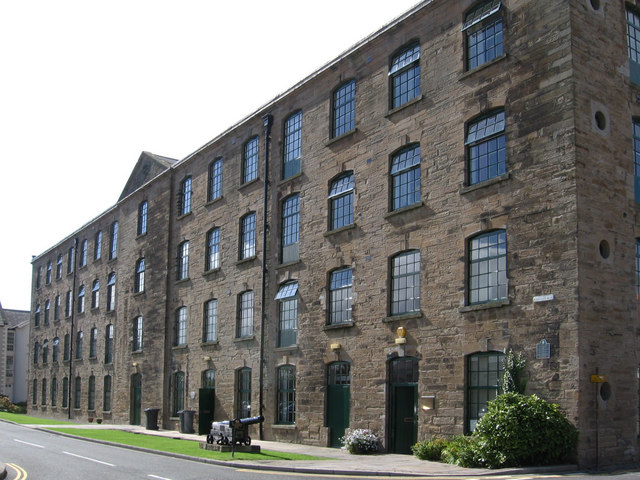
Catherine Mill, Whitehaven
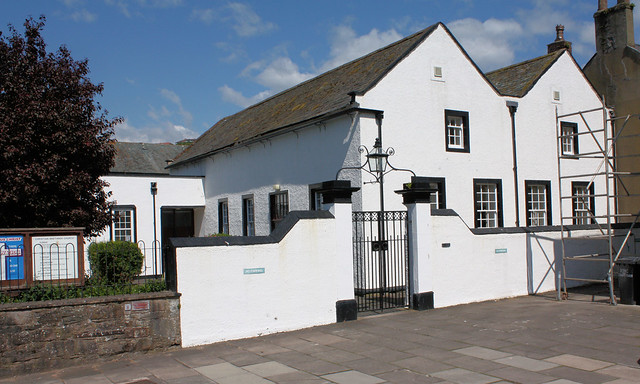
Christian Brethren Church, Whitehaven
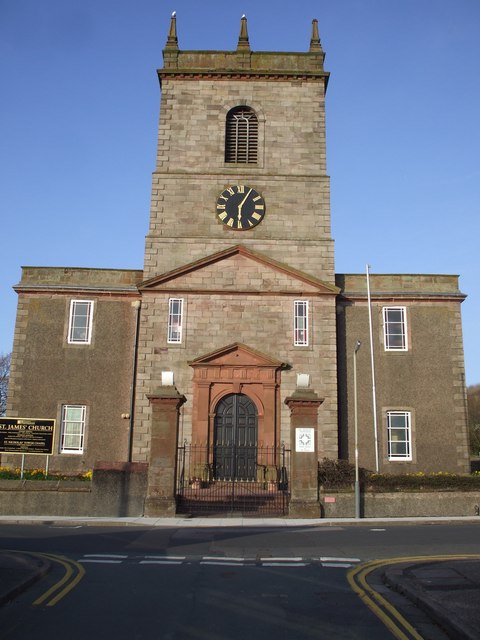
Church of St James the Greater, Whitehaven
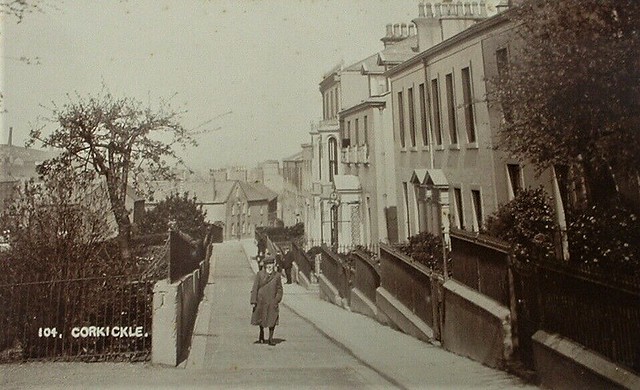
Corkickle
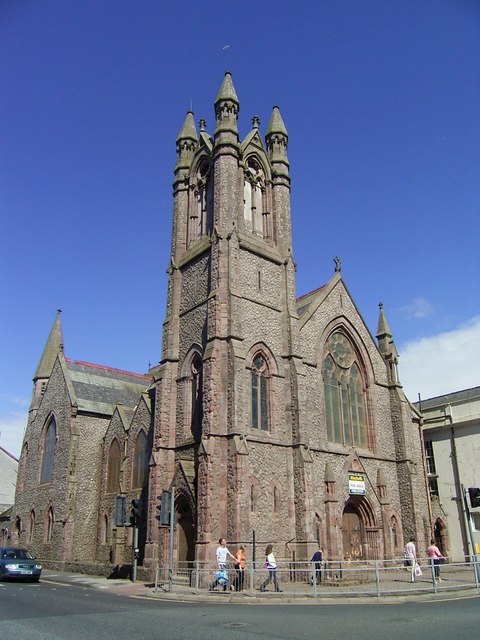
Former Methodist Church, Lowther St, Whitehaven
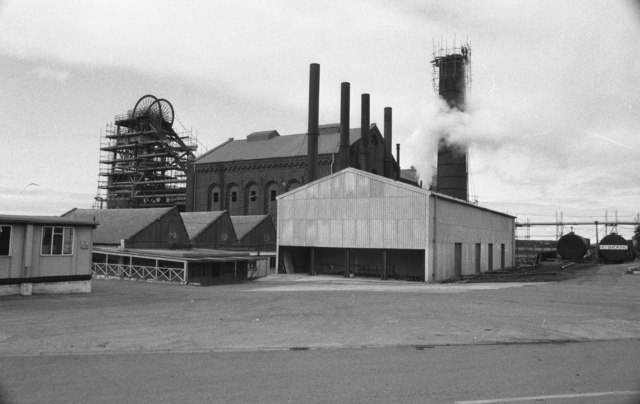
Haig Colliery (1914 - 1986)
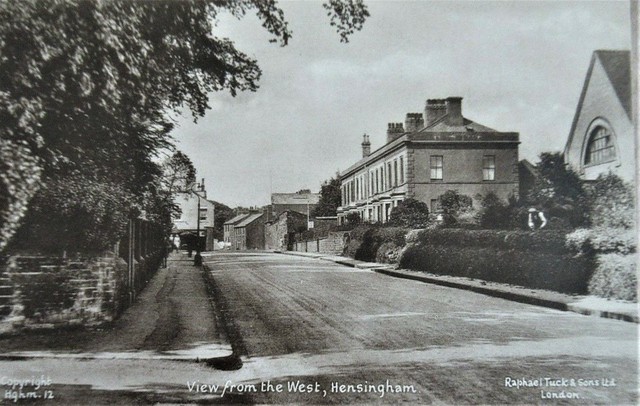
Hensingham
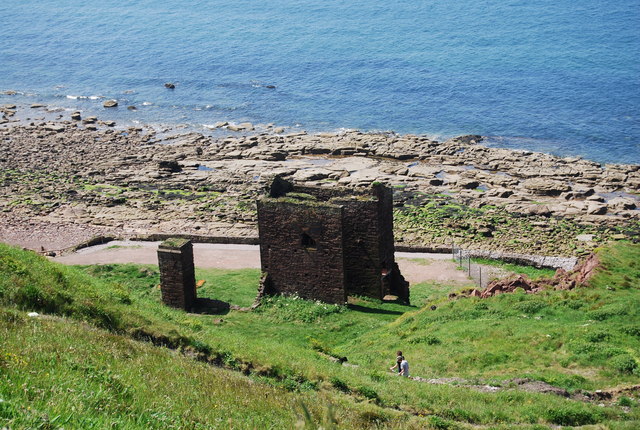
Saltom Pit, Whitehaven
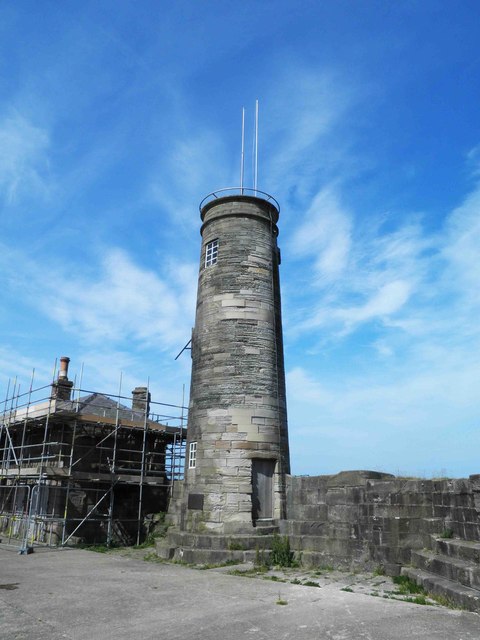
Old Quay Lighthouse, Whitehaven
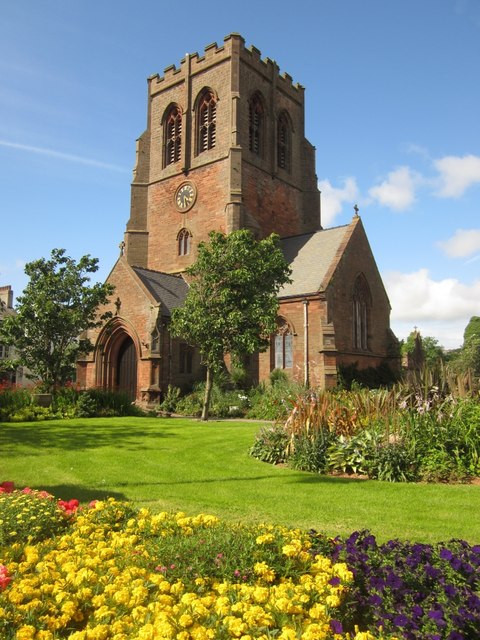
St Nicholas' Tower and Gardens, Whitehaven
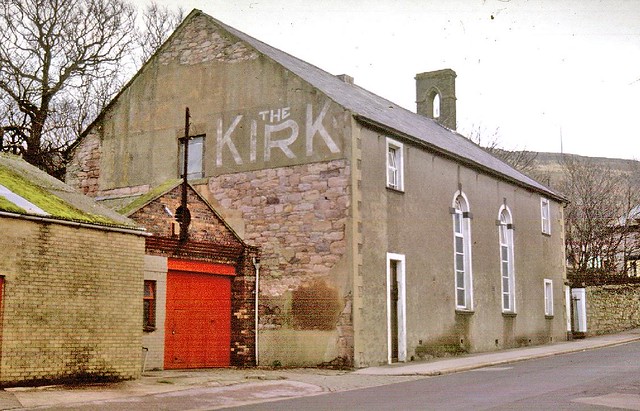
The Kirk Mission Hall, Whitehaven
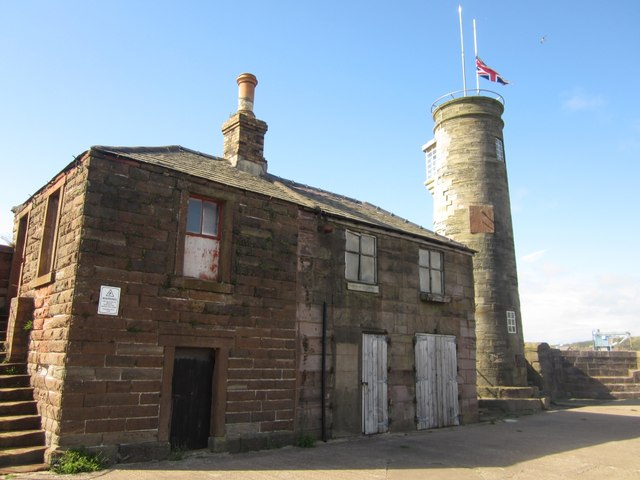
The Watch House, Old Quay, Whitehaven
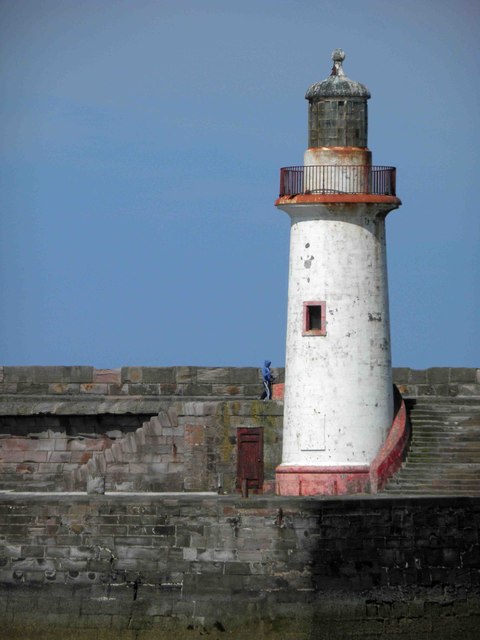
West Pier Lighthouse, Whitehaven
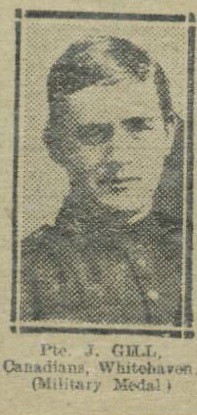
Whitehaven at War
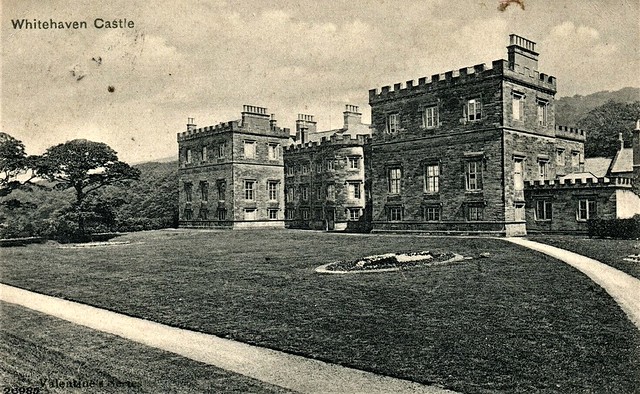
Whitehaven Castle
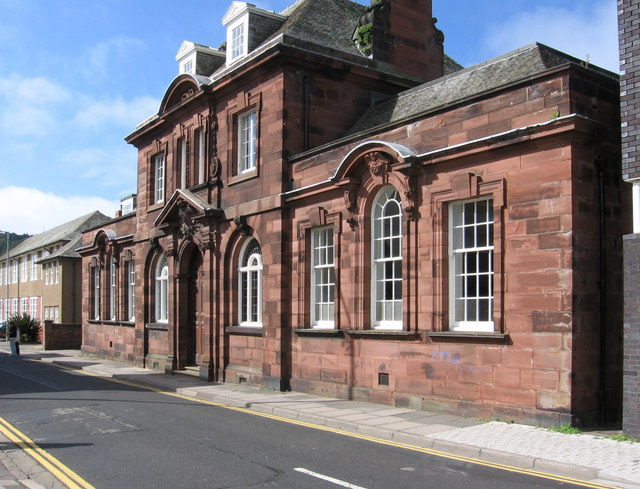
Whitehaven Library

Whitehaven, 1848

William Pit, Whitehaven
